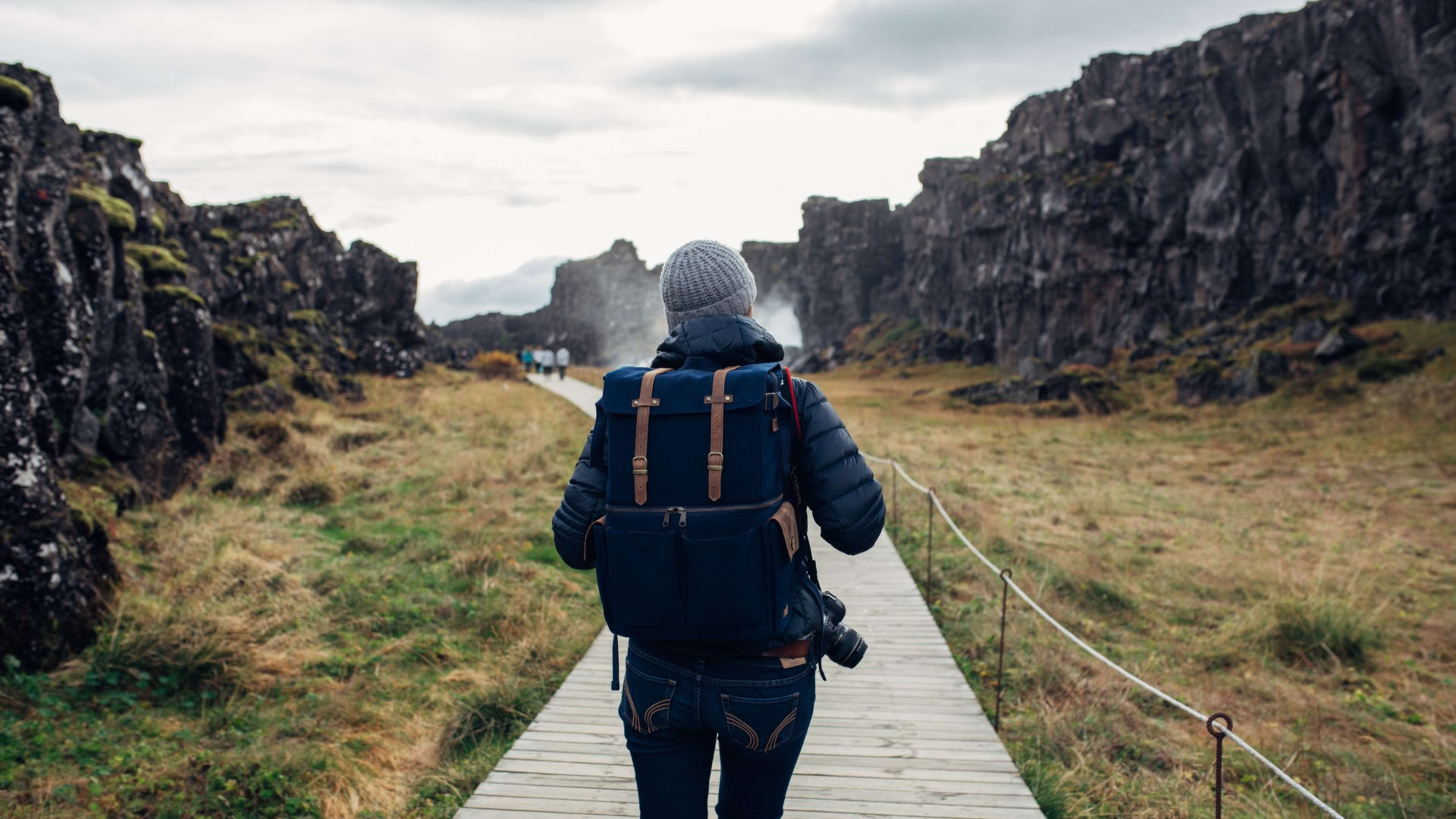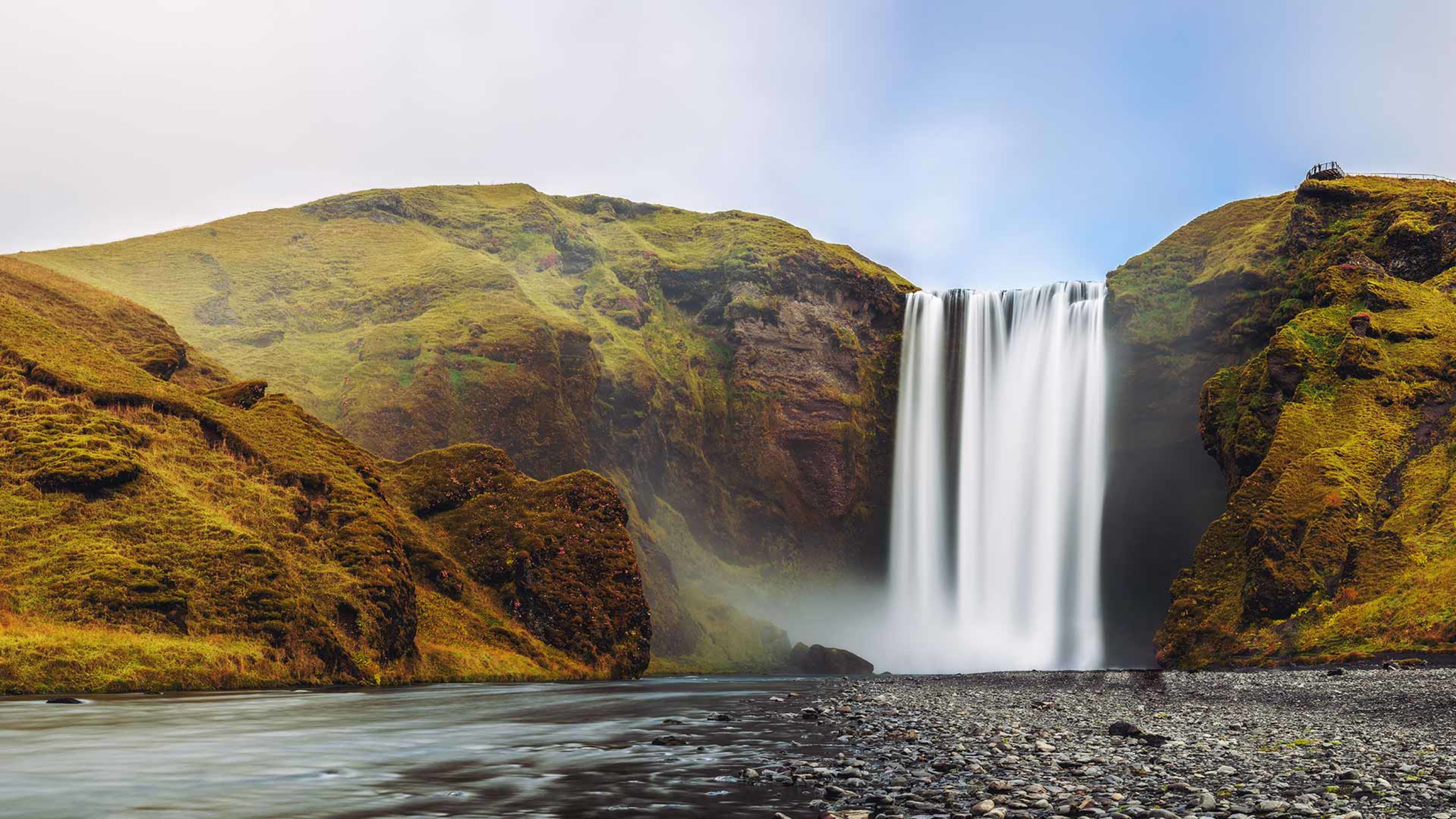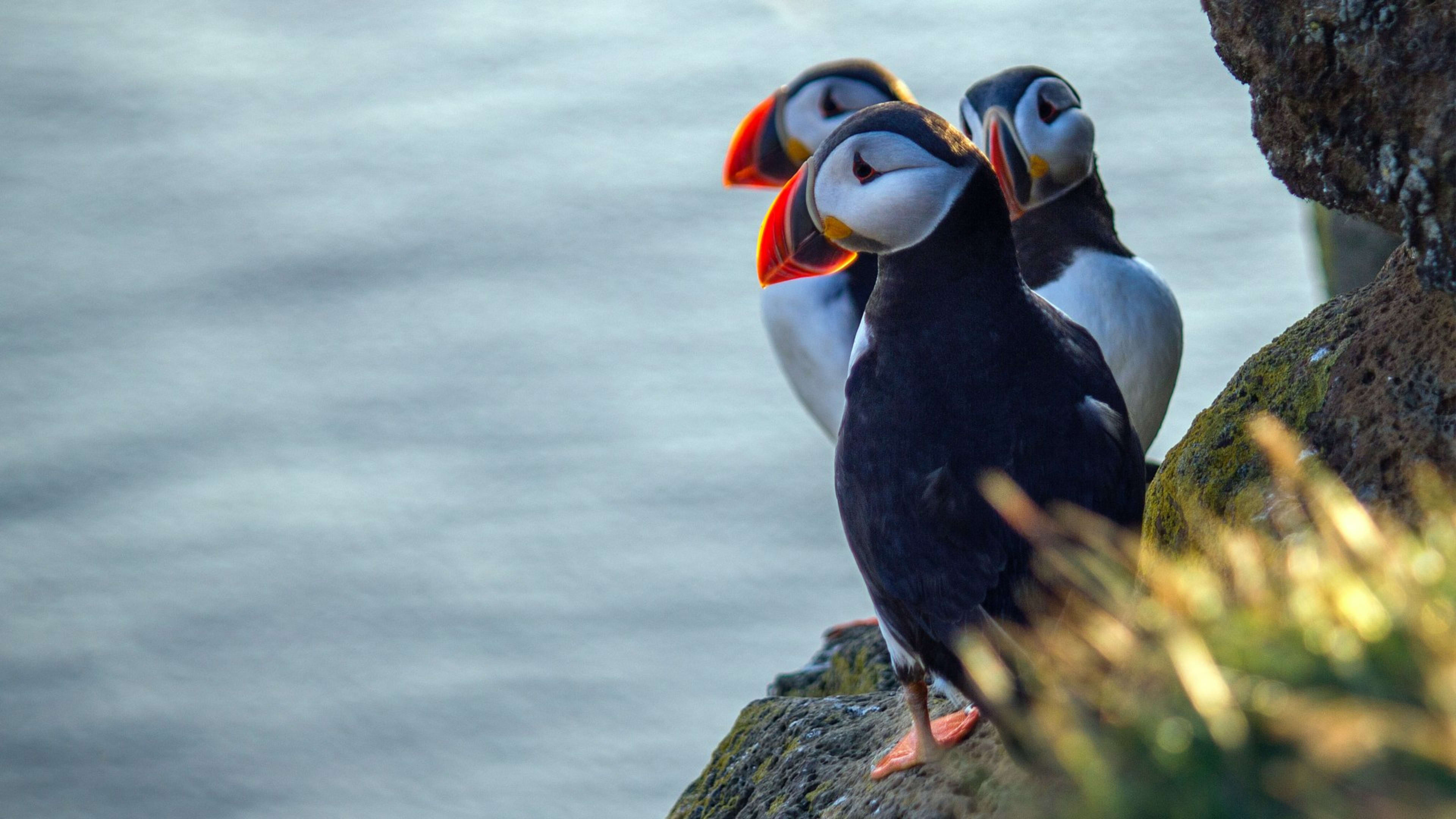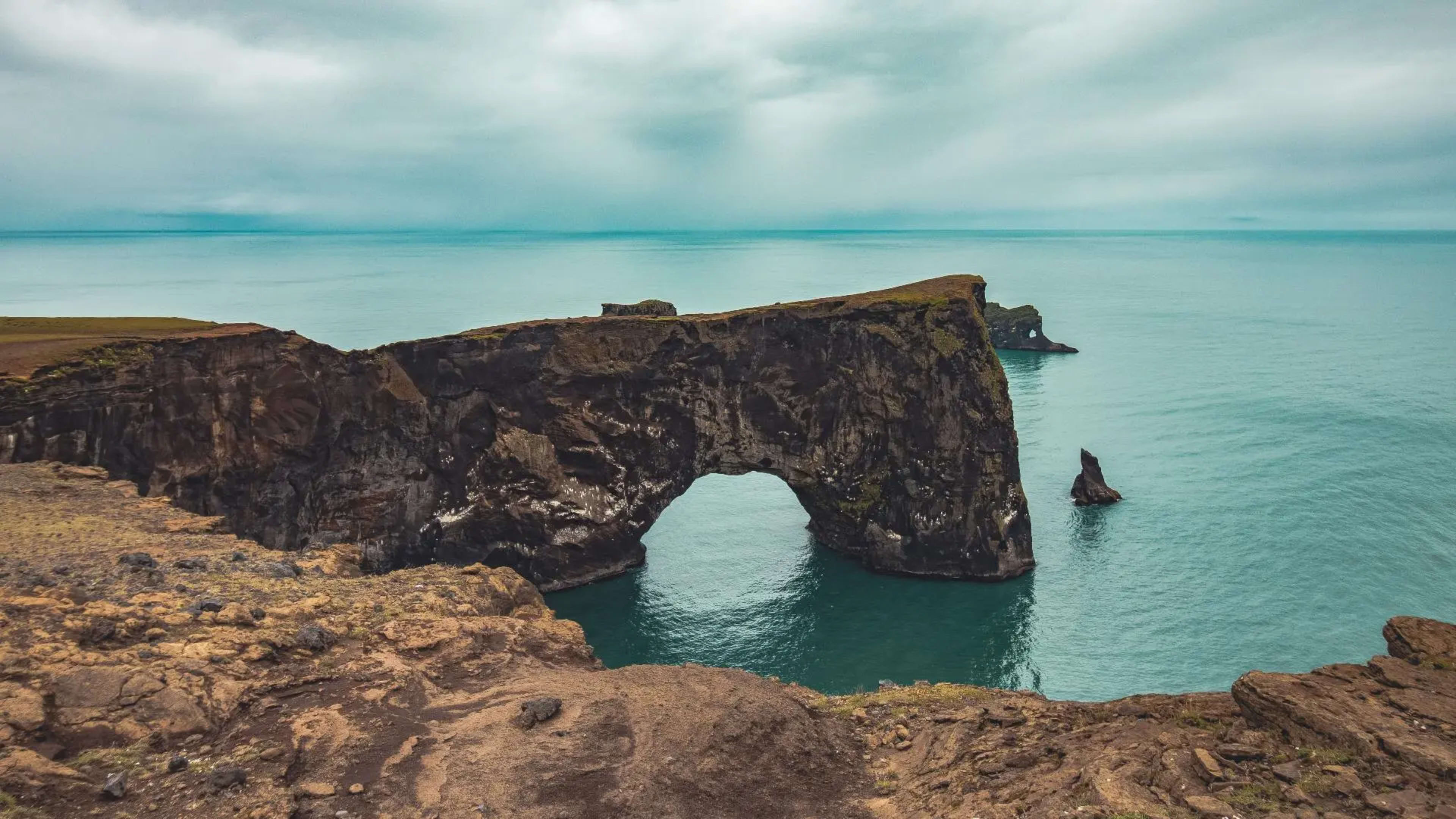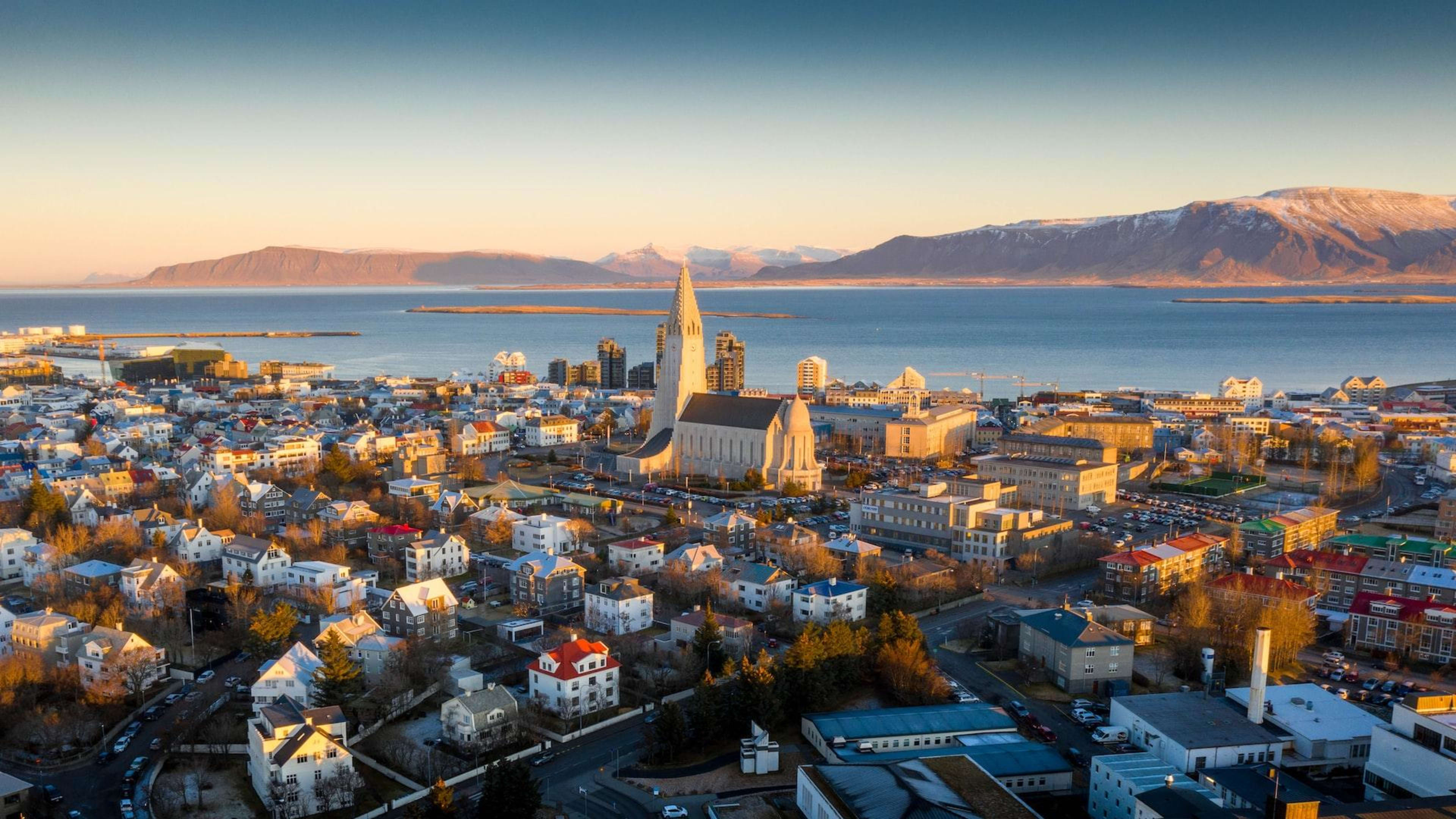Known as the Land of Fire and Ice, Iceland is famed for its dramatic volcanic landscapes, striking black sand beaches, and impressive glaciers. For such a small country, you'll have an incredible amount to see and do, plus a ton to organize when planning a trip.
With that in mind, we’ve made a list of the most important things to consider to help you start planning a trip to Iceland.
- Kick off your Iceland adventure with these vacation packages.
1. Decide how long to stay
The length of your trip is a key detail to decide first. How long you’ll spend in Iceland depends on how much time you can spare and what your travel goals are.
Shorter trips
Generally speaking, the longer the trip, the more you’ll be able to see. But if you only have a few days, it’s entirely possible to take in plenty of stunning landscapes and one-of-a-kind experiences.
For trips shorter than 4 days, the best option is to stay in Reykjavík. Using the capital as your home base will give you the chance to take day tours to famous nearby sights.
For example, you could travel the popular Golden Circle route. You'll see the Gullfoss waterfall, Geysir geothermal area, and Þingvellir National Park – 3 of Iceland’s top attractions – in just one day.
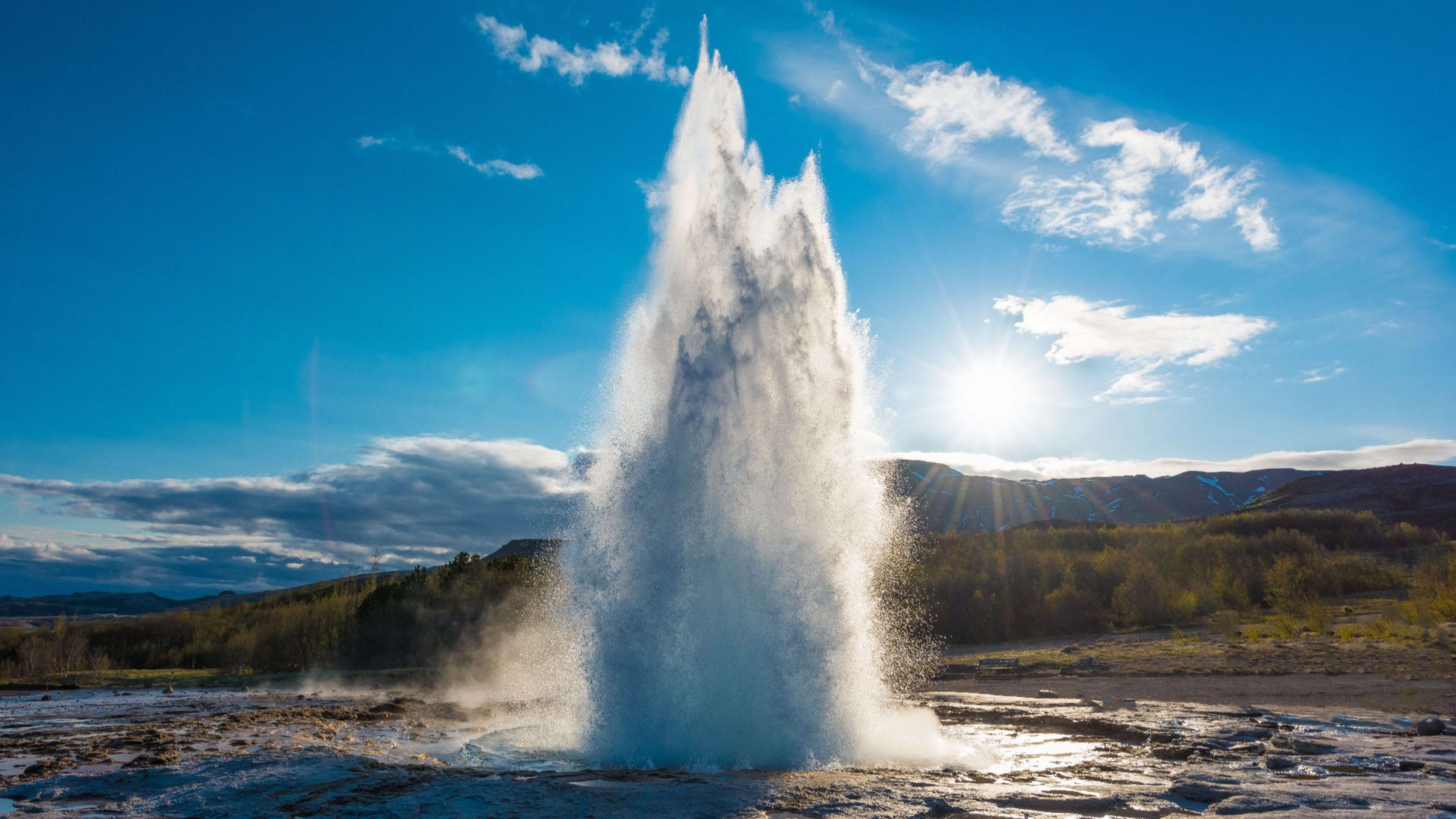
As well as traveling around Reykjavík, you shouldn’t skip exploring Iceland’s buzzing capital city. With exciting culture, restaurants, and nightlife, you’ll have plenty of fun things to see and do.
Walk through colorful neighborhoods with street art displays, eat at trendy food halls, and immerse yourself in cultural attractions like the Harpa Concert Hall.
You can also climb to the top of Hallgrímskirkja, Reykjavík's iconic church, where you’ll be treated to panoramic views of the city.
- For more inspiration, check out these multi-day tours from Reykjavík.
- Related: How long do you need in Iceland?
Longer trips
Got a week or longer? Venture out and explore even more of the country.
Head to the south coast to marvel at Jökulsárlón glacier lagoon, one of the region’s most popular destinations. If you’re up for it, take a boat tour to see the floating icebergs up close. On your way to the lagoon, you can stop at Seljalandsfoss waterfall, where you’ll get the chance to walk behind the thundering waters.
And don’t forget about Reynisfjara black sand beach near the charming village of Vík. It’s a great spot to take in the view and admire the dramatic cliffs and basalt sea stacks rising from the ocean.

- Go on a tour of South Iceland to see these wonders and a whole lot more.
- Related: Best things to see & do on Iceland’s south coast.
If whale watching is on your bucket list, travel north and you’ll find the coastal town of Húsavík, Iceland’s whale-watching capital.
While you’re here, don’t miss a visit to Akureyri, the unofficial capital of North Iceland. It’s an unmatched spot to sample local food, drink Icelandic craft beer, and try adrenaline-packed activities like snowmobiling.
Along the way you can stop and marvel at Goðafoss waterfall, known as the ‘Waterfall of the Gods’. Or explore Lake Mývatn, a volcanic lake surrounded by stunning natural landscapes such as geothermal areas, pseudo-craters, and lava formations.
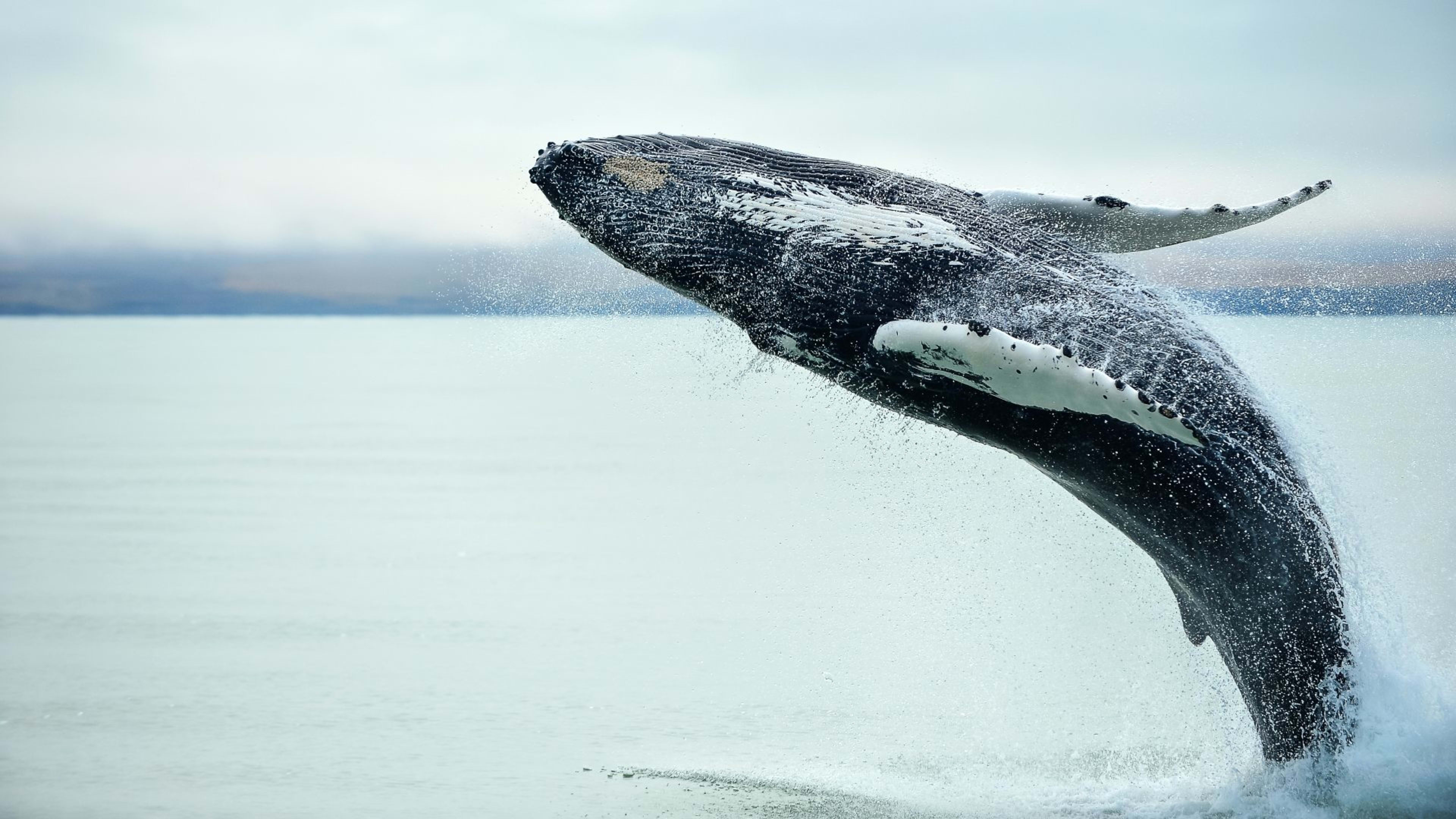
But if you want to see it all and then some, following the Ring Road route is just the option. This road is Iceland's main highway that encircles the entire island. It’s roughly 1,332 km (828 mi) long and offers you the opportunity to explore some of Iceland's most spectacular landscapes, major towns, and natural wonders.
We recommend taking at least a week to fully complete this epic journey and soak up all the main sights.
- Circle Iceland’s spectacular coast on a Ring Road tour.
- Related: Driving Iceland’s Ring Road: Ultimate guide.
2. Choose when to visit
With so many cool things to experience, there’s no bad time to visit Iceland. But maybe you’ll find that visiting in a particular season works best for you.
Visiting Iceland in summer
In summer, you’ll discover the phenomenon known as the midnight sun. This happens when the sun doesn't fully set, giving you long hours of daylight. It provides plenty of time for exploration and outdoor activities, even late into the evening.

You’ll be treated to lush landscapes, warmer weather, and access to the highlands – a region inaccessible in winter due to snow and ice. Plus, summer is festival season, with various cultural events, concerts, and outdoor celebrations happening across the country.
But this season is also the most popular time to visit. To make the most of your trip, we recommend planning ahead and booking everything in advance. This even includes making reservations at top restaurants in Reykjavík.
- Enjoy longer days to explore the island on an Iceland summer vacation.
- Related: Iceland in summer: Must-sees & must-dos.
Visiting Iceland in winter
Winter is the time to witness a truly spectacular display of the Northern Lights, thanks to the long nights and dark skies.
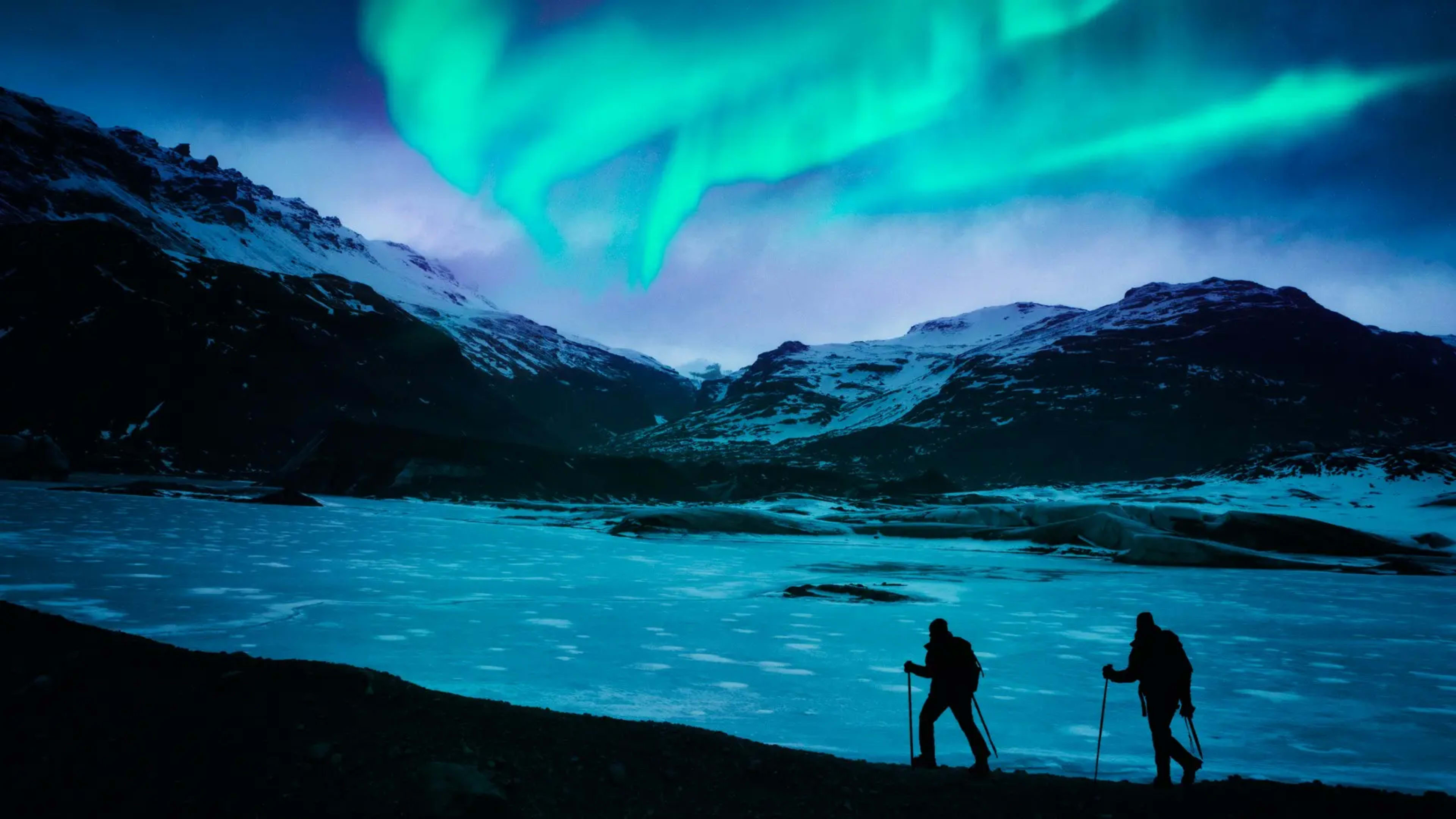
You could also be treated to magical winter scenery with snow-covered mountains, frozen waterfalls, and icy landscapes. Relaxing in Iceland's hot springs and geothermal pools with these backdrops is especially beautiful during the winter months. Plus, it may not be as cold as you think, with average temperatures hovering around -2°C (28°F).
But keep in mind that winter has shorter days, so you’ll need to plan carefully to make the most of each day. And to be prepared for the chillier conditions, you’ll definitely need to pack layers!
Winter weather can also be unpredictable with storms, strong winds, and snowfall, so flexibility is key during this season.
- Plan a trip to Iceland with these winter vacation packages.
- Related: Iceland in summer vs winter.
Visiting Iceland in spring or fall
Spring and fall are the shoulder seasons in Iceland. During these periods, there are usually fewer visitors around, so you’ll have more of the attractions to yourself. Plus, the weather is generally milder.

If you visit Iceland in spring, you’ll get longer daylight hours than in winter, meaning more time for sightseeing. And with longer nights in October and November, late fall is one of the best times to see the Northern Lights in Iceland.
Both seasons are also prime times for wildlife viewing, with the chance to spot whales, Arctic foxes, and reindeer. But they can bring a mix of sun, rain showers, and occasional storms. Packing smart with wind and waterproof clothing will help keep you dry and comfortable.
- Make the most of your days in Iceland with these guided group tours.
- Related: Iceland in the fall – Your guide.
3. Prepare your sightseeing bucket list
When you start planning your Iceland trip, you’ll find there are so many things to see and do! Interested in marveling at top attractions like the Golden Circle? Looking to get off the beaten path and explore the remote Westfjords?

Make yourself a list and plan your Iceland itinerary in advance. For some attractions, such as the Blue Lagoon or Sky Lagoon, it’s best to book ahead. Spots can fill up fast, especially in summer.
We also suggest having a few backup plans in case the weather takes a turn. For example, Reykjavík’s museums, shops, and cozy cafés can be nice options to save for a rainy (or snowstorm-y) day.
While you’re planning, don’t forget to consider your budget. Iceland has a reputation for being an expensive place to visit. Check out this helpful budgeting guide to get an idea of how much you can expect to spend when you travel in Iceland, and some easy ways to save.
- See 3 of Iceland’s most famous natural gems on a Golden Circle tour.
- Related: Best places to visit in Iceland.
4. Make a packing list
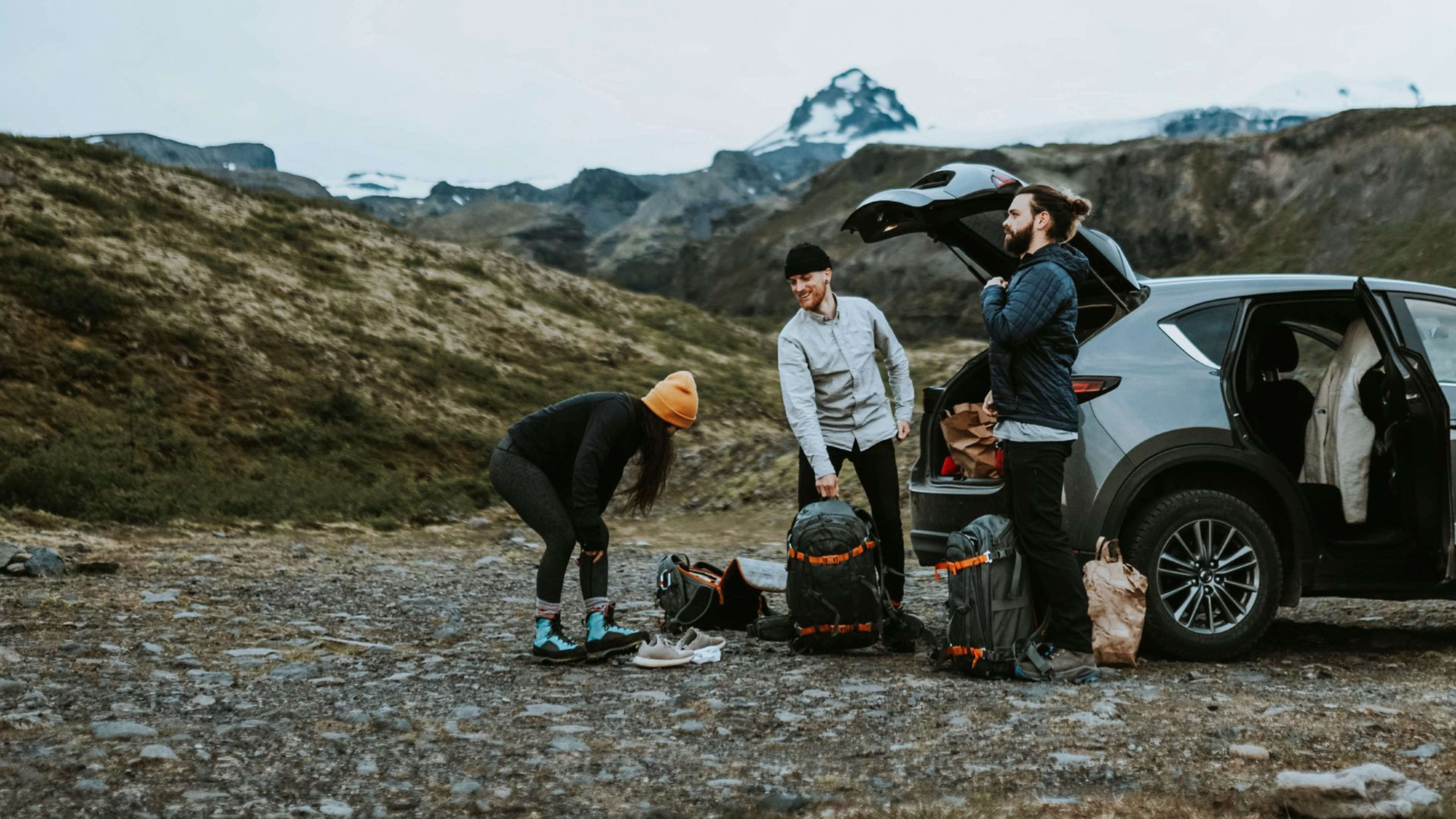
What you pack depends on the time of year that you’re visiting and the type of activities you have planned. However, as a general rule, it’s a good idea to have these 5 things at the top of your packing list:
- Waterproof jacket and pants
- Thermal layers
- Sturdy, comfortable hiking shoes
- Hat, scarf and gloves (in winter)
- Swimwear
Of course in summer you can swap those cold winter accessories for a cap, SPF and sunglasses. But don’t forget to keep an eye on the weather forecast. It can help you make any last-minute changes before you zip up your suitcase and head to the airport.
- Get more tips on what to bring with you in this Iceland packing guide.
5. Pick your travel style
Now that you know how to plan a trip to Iceland, it’s time to choose how you want to get around the island. The main question is, to drive or not to drive?
If you like having the freedom to explore the Land of Fire and Ice at your own pace and stop off wherever you like, a self-drive tour is for you.

Prefer to have someone else drive? Check out these guided group tours where you can travel around the country with like-minded adventurers. Or, if you’re after a more intimate discovery of what Iceland has to offer, try a private guided tour.
With both options you’ll be led by a local guide with expert knowledge of the country.
Or maybe you want to base yourself in Reykjavík or Akureyri. In that case, multi-day bus tours let you stay in Iceland's main hubs and explore nearby attractions on day trips. You’ll be able to customize your tour by adding extra activities to pack even more into your vacation.
Still not sure what travel style suits you? Find answers to all your questions about how to get around Iceland in this detailed guide.
- Get inspired with these Iceland vacation ideas and learn why you should book with us.
Plan your trip to the Land of Fire and Ice with Iceland Tours
Iceland is one of the most exciting destinations you can visit, and planning your trip should be too.
Once you’re ready to book, our Reykjavík-based team at Iceland Tours can make Iceland trip planning a breeze. We’ll arrange your accommodation, local transport, and a detailed itinerary. So all you need to do is get excited about your adventure!
All it takes to secure your booking is a 5% deposit. So get stuck into these Iceland vacation packages and find your next adventure.

